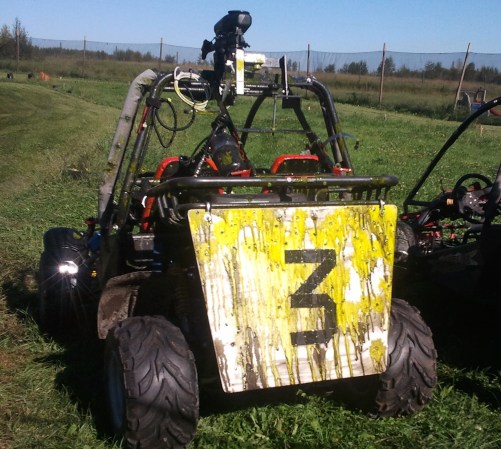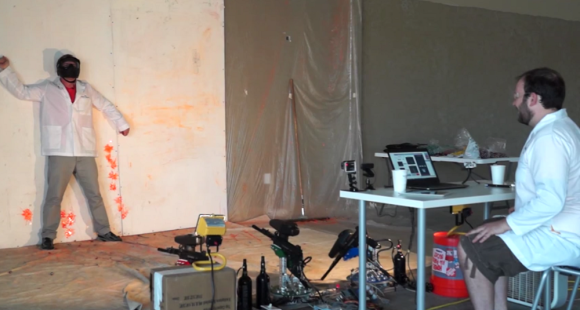
It seems as though [Nathan] has taken some serious inspiration from the Warthog. The iconic armored buggy from Halo video games has a turret mounted to the roof. Although [Nathan]’s buggy only shoots paintballs from its turret.
Mounting paintball markers (guns) to various objects such as vehicles, robots, or other machines isn’t quite as straightforward as it seems. Vibrations from anything can transfer through a clamping system and cause paintballs to break. This, of course, inhibits the functionality of the marker and is a messy cleanup to boot. Then there has to be a way to fire the paintballs, which is usually handled by soldering to the electrical connections in the marker. And the entire rig has to stand up to the normal jostling and sudden turns from the buggy.
[Nathan] has solved these problems first by creating a custom fast-change mount that allows any malfunctioning markers to be changed rapidly. The electronic firing mechanism is handled by an ATtiny microcontroller and there is a custom electrical connection that is automatically made when the marker is bolted to the mount.
The new system allows markers to be changed in about 30 seconds, much better than any other system. Maybe in the future [Nathan] can upgrade the buggy’s turret to accommodate a paintball minigun.












